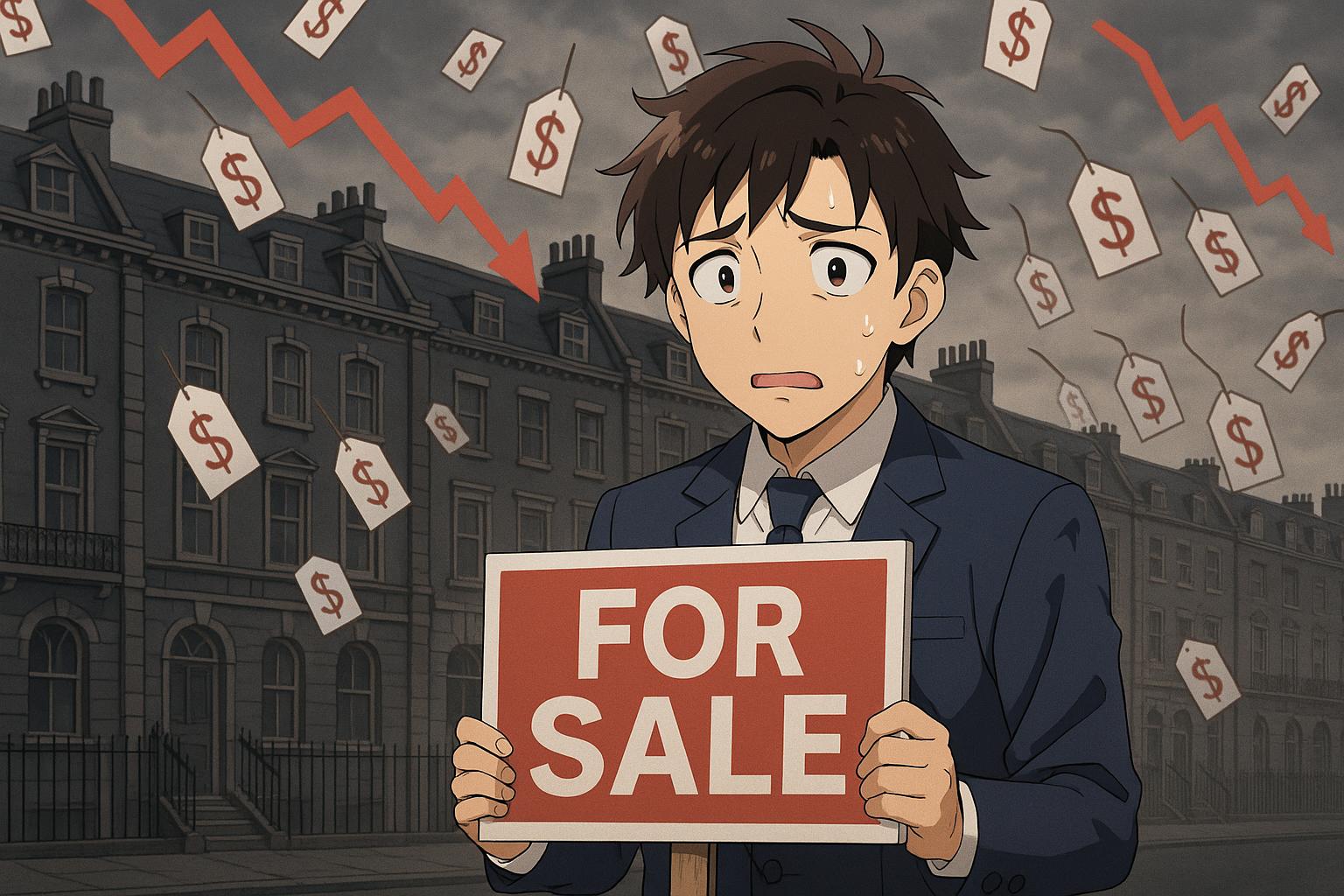Home sellers in central London are grappling with a stark reality: many properties may now fetch prices significantly lower than their purchase values. Recent data reveals a troubling trend for the capital's prime real estate market, where some boroughs have seen prices plummet by over 20% in the past four years. In one notable area, house prices dropped by a staggering 25% in just two years. This dramatic decline has prompted a reevaluation of expectations among sellers who often remain reluctant to acknowledge the shift in market conditions.
Despite efforts from some estate agents to project optimism, factual data portrays a different narrative. According to analysis by TwentyCi, eight of the top ten most difficult postcodes to sell a home are situated in London itself. The study took into account variables like sold prices compared to asking prices, time on market, and the propensity for sales to fall through. Presently, central London homes are achieving an average of 96.1% of their original asking prices, which lag behind the national average of 97%. This translates into a scenario where a property initially listed at £1 million typically sells for around £961,000—a sharp decline from previous valuations.
Compounding these issues is the protracted sales cycle; homes in central London are taking an average of 89 days to sell, slightly longer than the UK average of 84 days. Some prime locations paint a particularly bleak picture. In Marylebone, properties are achieving only 88.1% of their original asking prices, and nearly 36% of offers fall through—well above the national average. In more affluent areas like Belgravia and Chelsea, homes are on the market for approximately 201 days, and nearly half of the listings in Pimlico see at least one price reduction.
The City of Westminster stands out with average house prices that have dropped by 25% since peaking in January 2023. Based on recent Land Registry figures, the average home is now selling for £920,000, down from £1,225,000. Similar trends are seen in Kensington and Chelsea, where average prices have fallen by 28.5% from their peak in October 2021, with current values resting at £1,183,000 compared to a high of £1,653,000.
Amid these unsettling statistics, several experts are weighing in on the shifting landscape. Henry Pryor, a professional buying agent, highlighted that estate agents are hesitant to address the market's underlying weaknesses. He stated, “The market isn’t as strong as it was… the froth has come off.” He lamented that while sellers appear to hold on to inflated expectations, many prospective buyers are operating as though it’s 2015, leading to a significant disconnect.
A multitude of factors contribute to this downturn. Higher interest rates, the aftermath of Brexit, increased taxation, and alterations to non-dom tax rules have spurred a flight of wealthy individuals from the UK. A report noted that the proportion of overseas buyers monitoring the market hit a historic low in early 2025. Jonathan Hopper, chief executive of Garrington Property Finders, suggested that a recalibration of London's prime market is underway, as many high-net-worth individuals reconsider their investments in the capital.
The current stamp duty landscape further complicates matters for buyers, particularly for those seeking to invest in properties of £1 million and above. The associated costs can be prohibitively high, deterred by the prospect of financial loss if the property needs to be sold within a short timeframe. Instead, many buyers are pivoting towards larger properties in outer areas, which provide more stable investment opportunities.
Experts also point to market oversaturation as a critical factor in driving prices down. The number of homes listed for sale has surged, especially properties over £5 million, reflecting an increase of 30% compared to the previous year. Many high-end buyers are cautious and prefer to wait, creating a surplus of available properties that diminishes their appeal.
While the landscape appears challenging now, some analysts indicate a glimmer of hope for the future, suggesting that prices might stabilise, with forecasts anticipating a rise in values by 2028. As well, a recent report hinted that while prices in prime London are still decreasing, the rates are slowing down. However, until buyer confidence fully rebounds, the London market may continue to lag behind, presenting both challenges and potential opportunities for discerning buyers willing to navigate the current climate thoughtfully.
In summation, the central London property market is in a state of flux. While current trends indicate a decline in sales and prices, the mounting stock and cautious buyer sentiment suggest that a period of adjustment is necessary. With economic indicators pointing both towards continued declines and eventual rebounds, those with an eye on the London property market will need to remain vigilant and adaptable.
Reference Map
- Paragraphs 1, 2, 3, 4
- Paragraph 5
- Paragraph 6
- Paragraphs 7, 8
- Paragraphs 9, 10
- Paragraph 11
- Paragraph 12
Source: Noah Wire Services
